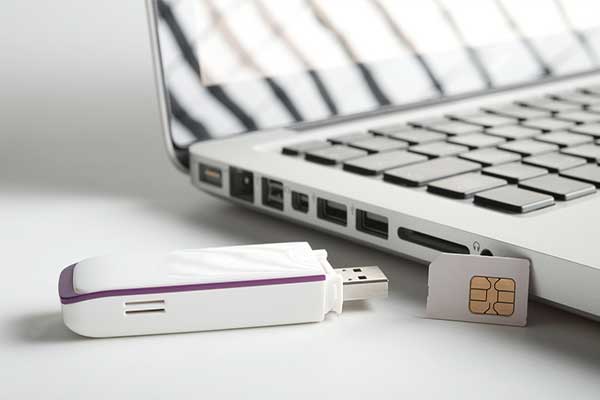Even if you’re an experienced wireless product engineer, the prospect of designing and launching a 3G / cellular-connected device can be daunting. The added pressure of gaining network approval and getting your device certified for launch in specific markets heightens the pressure on you to get antenna integration right.
You won’t be the first or last engineer to take extra steps to make sure that you pass the requirements of requirements and regulatory bodies; taking a holistic view of device and antenna will help you avoid the most devastating performance issues that could cost you further down the product development cycle. Here are just a few steps you can take to ensure your antenna performs efficiently in-situ and in-silo during testing:
Select the right antenna for the device
In cellular devices, the selection of an appropriate antenna is crucial in achieving high levels of performance. The selected antenna needs to suit the application and form factor of the new device.
Simply ‘adding-in’ an antenna at the end of the development process will not guarantee sufficient enough performance. Passing network approval requirements or gaining the certifications required for wireless devices launching on cellular networks need more care and attention.
You should make this decision early in your design process so that all antenna options can be considered, allowing the designer to make a more informed, calculated decision.
Don’t simply make your decision based on the promised performance in a data sheet. Data sheets will give performance characteristics of the antenna in isolation, so selecting the one that is best suited to the device requires more careful consideration. We assess the three most popular embedded antenna types in our step-by-step 3G antenna integration guide.
Optimally locate the antenna
Antenna cannot be placed like other digital components, embedded antenna need to be located optimally within a device. This means that ‘adding’ an antenna into whatever space is left in a device will not allow you to gain sufficient enough performance for network approval.
Every antenna will have guidelines for optimal placement, some more than others, but the impact of nearby components will also play a role in determining the optimum location. Normally, placement is recommended on the corner of a PCB, but if there are metallic components nearby (LCDs, batteries, etc) then this will not be the best solution.
The size of the device will also play a role in the position of the antenna and determine the type of antenna best suited to the device. Testing is an essential process to find the optimal location of an antenna, and the size of the ground plane length will be a fundamental factor in finding the best position.
Finding sufficient ground plane length
As devices get smaller and smaller, the PCBs we use are becoming more compact and full of components that maximise the set of features of the device. Finding enough room for the recommended ground plane length is an impossible task in some scenarios.
Sacrificing ground plane space is not ideal, particularly for sub-1GHz frequencies which are most susceptible to efficiency losses, even with minimal loss of ground plane size. Antenna selection plays a key role in determining an appropriate ground plane length. Where ground plane space is severely limited, an FPC-type antenna may be the most appropriate solution.
Test, reconfigure and test again
After careful attention to antenna optimisation throughout your design process, the prototyping stage of the development cycle is vital to ensuring the antenna works optimally. With the right testing equipment, it is possible to test devices along the same performance parameters that carriers themselves use during network approval testing. These include parameters such as:
- Total Radiated Power (TRP) - testing the overall power efficiency of the antenna
- Specific Absorption Rate (SAR) - this will test the absorption of material nearby the antenna, including casing materials, and human skin if a handheld device
- Radiated Spurious Emissions (RSE) - this will test to see if the device is only broadcasting at intended frequencies
These parameters provide a fairly comprehensive overview of the overall efficiency of the antenna. During the prototyping stage, it is important to test, reconfigure and then test again to increase performance and reduce the risk of network rejection. This is vitally important if the form factor of a device results in guidelines not being met for performance, usually in small, handheld devices.
Conclusion
This was a brief overview of the overarching themes of a successful antenna integration for cellular / 3G antenna within a device. There may be device-specific factors which provide challenges to optimising an antenna for performance, such as the radiation patterns caused by in-situ performance, this is why testing is vital to optimise performance and avoid a costly redesign process.
There should never be an element of risk or of a ‘gamble’ when submitting a device for certification or network approval, you should be well aware of wireless performance prior to compliance testing. PTCRB certification costs every time a device is submitted, therefore for your budget and timeline for launch to stay within expectations it’s important you conduct your own testing. Antenova can help with this - our Over-the-Air testing equipment tests wireless performance against the latest testing protocol.



